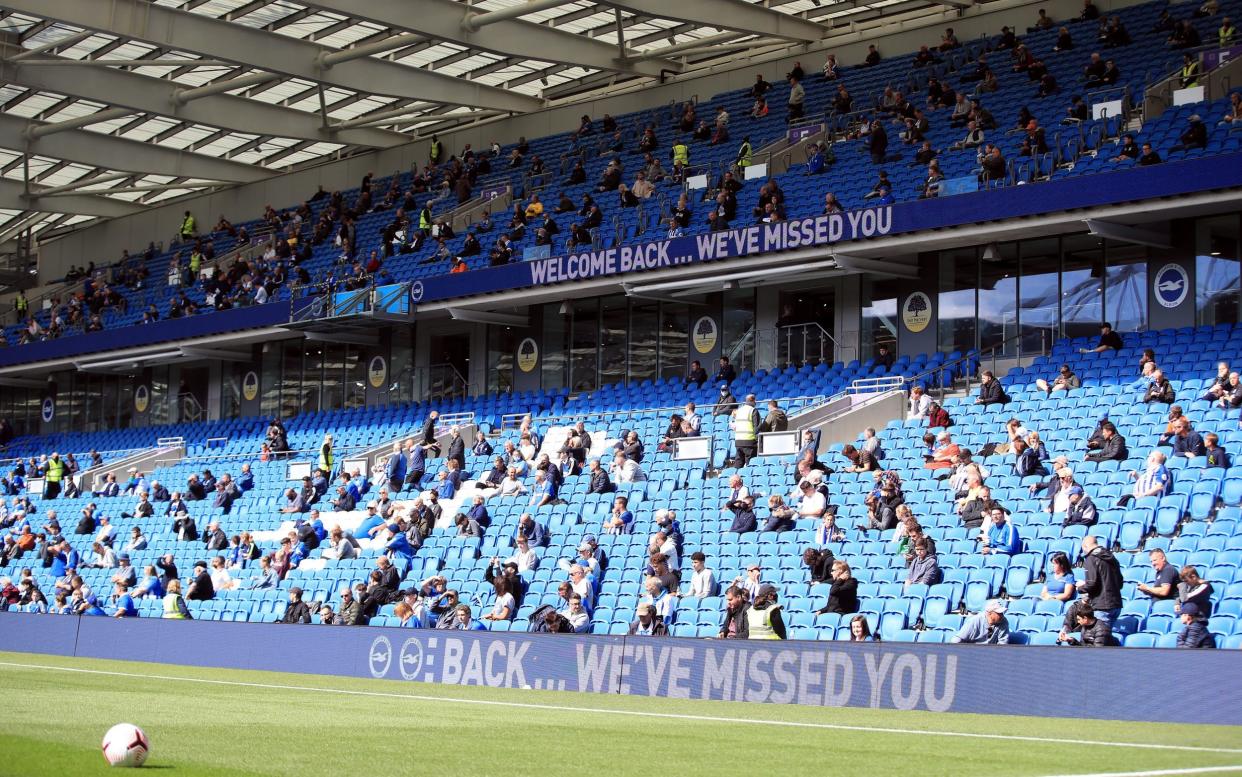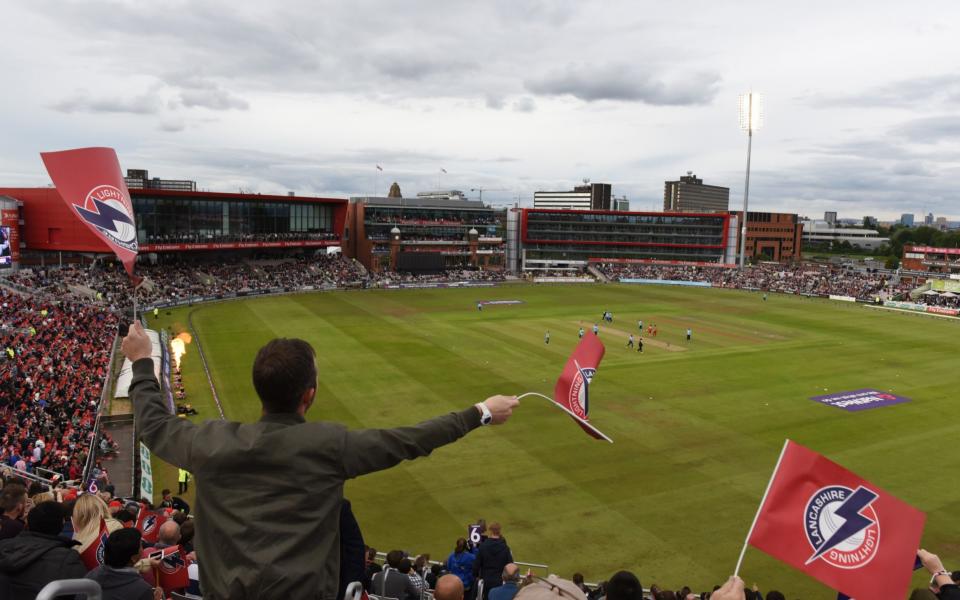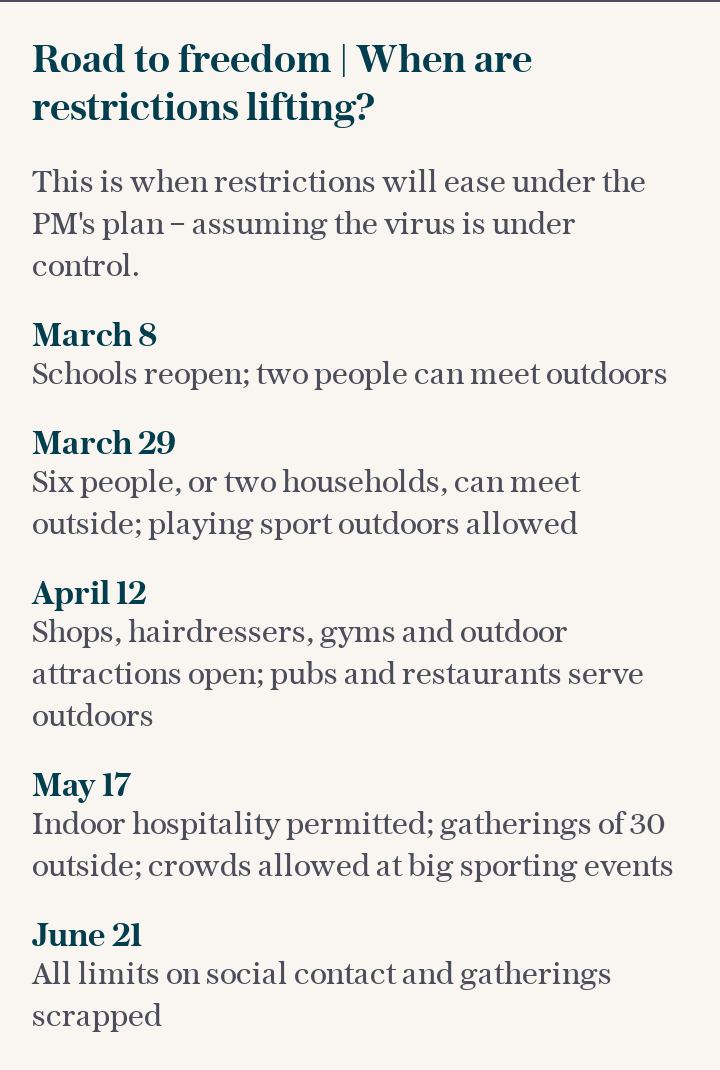Government considers vaccine passport and lateral flow test pilots to speed up return of fans

Vaccine passports for stadiums have been revived by Government as part of a three-pronged strategy to ramp up crowd numbers for the great summer of sport.
Lancashire Cricket Club and at least one Premier League team have already expressed interest in April pilots, in which the innovations will be road-tested.
As well as digital Covid-19 record checks for spectators, ministers are keen to explore 30-minute lateral flow tests outside venues as well as home testing kits.
Liverpool University research is also understood to be feeding into ministers' "Scientific Events Research Programme" ahead of rules being relaxed.
The hope is that sports will use the scheduled May 17 return of 10,000 fans as just a stepping stone towards rapidly increasing numbers beyond June 21.
Sport has welcomed the Government's decision to revisit vaccine passports, having previously opposed the technology due to the potential impact on civil liberties.
Ministers' roadmap details how experts will now consider "Covid status certification".... "using testing or vaccination data to confirm in different settings that people have a lower risk of transmitting Covid-19 to others".
Daniel Gidney, Lancashire's chief executive, said ministers were right to be reconsidering the technology. "However difficult that is, in terms of return of crowds, it should be considered part of the talk," he added. "It’s not a silver bullet but it’s something that should be considered."
Involvement of England's top tier in the pilots could also help ease concerns over the sporting integrity of giving one-off home advantage on the final day of the season.
Premier League clubs will vote on whether to have fans back on May 23 because the competition is keen to ensure away teams do not feel they are at an unfair disadvantage. One option would be for Government to offer the likes of relegation-threatened Newcastle, due to play away at fellow strugglers Fulham, a chance to have home fans in April as part of the pilots.
The roadmap announced on Monday allows for the prospect of crowd numbers being scaled up dramatically beyond 10,000 by the time England play Czech Republic in their final Euro 2020 group match on June 22.
Whitehall sources and public health experts played down the likelihood of 90,000 being inside Wembley by then, but Lancashire announced they were hoping to have a full Old Trafford for the T20 Blast against Worcestershire on July 1.

In a briefing with reporters, Lancashire's Gidney said cricket's older demographic placed the sport in pole position for getting full stadiums.
"It's a perfect audience because a lot of them will have been vaccinated," he added. "We also have the space because we have 17 acres to do a lot of lateral flow volume testing and that is high on the Government's agenda and we are very keen to support that."
Gidney, who announced the club had suffered an £18 million drop in turnover over the past year, is among a host of clubs lobbying to be included in pilots. "As far as I am concerned I want to be able to get members back watching County Championship matches in April – not in huge numbers but we need to get those pilots away," he added. "The more pilots we have the more data we have."
The Government blueprint adds that "over the spring the Government will run a scientific Events Research Programme". "This will include a series of pilots using enhanced testing approaches and other measures to run events with larger crowd sizes and reduced social distancing to evaluate the outcomes. The pilots will start in April."
Wimbledon, The Open, Silverstone and Royal Ascot are now planning to welcome crowds after the Prime Minister announced that, from May 17, gates can finally open.
In the coming days, Wembley chiefs will also push for 10,000 fans at the FA Cup final, which falls two days earlier, and potentially up to 24,000 for England vs Scotland at Euro 2020. The fourth and final step of the Government recovery plan aims for the lifting of all restrictions on sports and entertainment events from June 21 at the earliest, “using enhanced testing approaches and other measures” which are to be trialled at pilot events starting from April.

Whitehall sources expressed "extreme caution" over the likelihood of full stadiums in late June, but recognised there was an ambition to scale up numbers rapidly. Manchester City manager Pep Guardiola welcomed the news, but pointed out that there have been a number of setbacks in the pandemic already.
"It will be good for the world of football, but everything changes a lot and it's getting better, but it can get worse," he said ahead of his side's Champions League last-16 match against Borussia Monchengladbach.
"We have to be so calm to be sure that it's going to happen. Hopefully, for world football, the stadiums can be full again and people can come back to enjoy this game. But still, I have the feeling we have a long way to go until this situation is finished."

